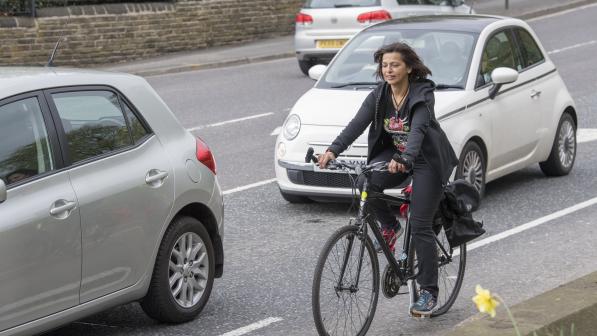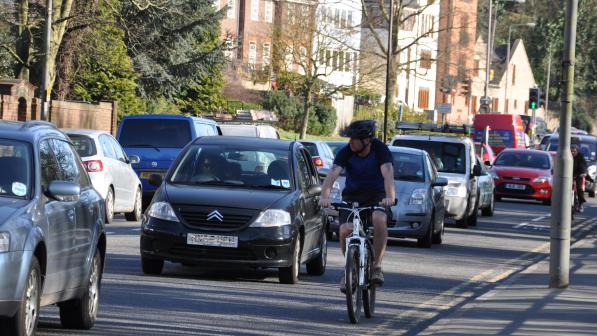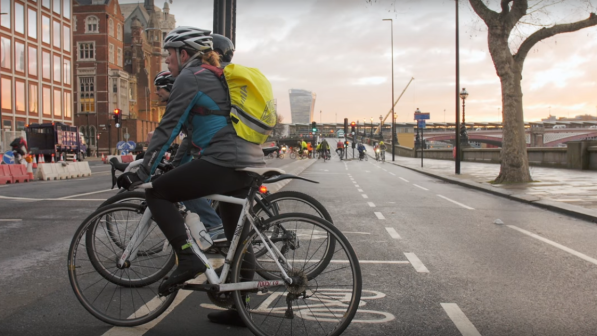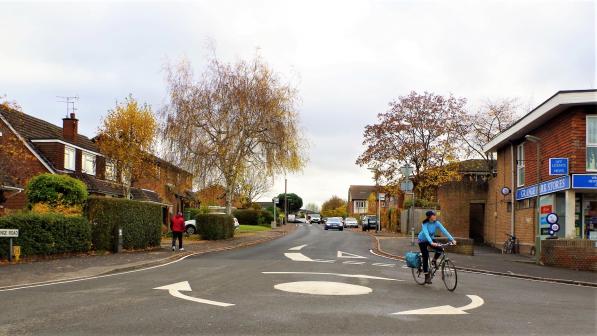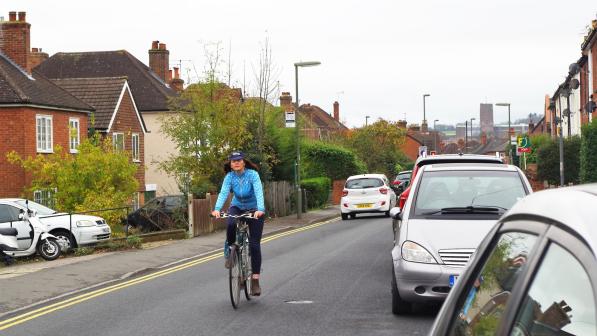What drivers need to know about cyclists…

I am not here to defend law-breaking cyclists, just as you will never hear the AA defending drunk drivers or speeding motorists. Here at Cycling UK we believe it is not OK for cyclists to break the law, jump red lights and cycle on pavements.
There is a minority that do, like there is a minority of motorists who talk on their mobiles while driving. This is not about point-scoring smugness – I’d just like us to all get along and make the roads a safer and a much less stressful place.
I would like to explain to the driver who this morning beeped and shouted at me that, like the majority of cyclists, I have not chosen my road position just to annoy you or make you late. I am cycling in the safest place for me and for you. I am avoiding potholes, the gutter, your blindspot and a dangerous junction.
I realise it is frustrating for you to overtake me three times, because I catch up with you again and again in a traffic jam. But I need to get to work too and even though you tell me to “get off the road”, I don’t want to cycle on the pavement as it is illegal and I may hurt someone.
This driver’s reaction is quite common, but in many ways it is not always surprising that they think this way. They don’t cycle regularly and no one has ever explained to them why cyclists don’t want to ride in the gutter and “out of the way”.
I’d like there to be more understanding on both sides; 80% of cyclists and 94% of adult Cycling UK members hold a valid driving licence, whereas 18% of AA members cycle
Victoria Hazael, Cycling UK senior communications officer
As our roads get more congested, people are more frustrated as they battle through the traffic, especially in rush hour. I get stressed when I am struck in a traffic jam and stress makes people angry and angry people shout and beep.
I understand that inside the safety of a car you might shout, swear and say things that you wouldn’t normally dream of saying to a stranger - but somehow when you are driving, you get frustrated. It happens.
I’d love to have a chat with the driver who had a go at me this morning and explain these things to them face to face, but I am too timid to stop and ask them to meet me for a cuppa and fear the whole thing would just descend into an argument, so instead I take the coward’s way out: I write about it.
Here’s a list of things I would love all drivers to know and I think it is every cyclist’s responsibility to share these with drivers, so that there is more understanding between us and therefore fewer people dying or being injured on our roads.
What every driver needs to know about sharing the road with a cyclist
- Do not get impatient with cyclists who ride away from the kerb or parked cars. Cyclists are trained not to hug the kerb. This is because cycling away from the gutter increases their visibility and helps them avoid the risks of a) parked car doors opening on them; b) being overtaken where this would be dangerous; and c) having to swerve towards the traffic stream to avoid potholes.
- Always look carefully for cyclists before pulling out at a junction or roundabout. Junctions are risky places for cyclists – around three quarters of incidents involving them happen at or near them.
- Always look carefully for cyclists before making any turning manoeuvre or changing lanes in slower-moving/stationary traffic. This is particularly important for lorry drivers.
- Leave plenty of space when overtaking a cyclist, at least a car’s width when overtaking at lower speeds (20-30mph); and allow even more space (a) when travelling at higher speeds; (b) when driving a lorry or any other large vehicle; and (c) in poor weather (rain makes it harder for cyclists to see potholes, and wind gusts can cause them to wobble).
- Never cut in/turn left sharply after overtaking a cyclist. Drivers do not appreciate this either when other drivers do it to them – it is, in fact, one of the top five causes of driver stress.
- Wait for a cyclist to ride through a pinch point (such as a road narrowing caused by something like a pedestrian refuge) before driving past, unless you are absolutely certain that there is enough room to overtake them at a safe distance.
- Drive at a considerate speed, don’t accelerate or brake rapidly without good reason around cyclists or follow them impatiently/too closely. ‘Tailgating’ intimidates drivers and cyclists.
- Before turning out of a minor into a major road, wait for any cyclist riding along the major road to pass you – don’t turn out in front of them.
- Give way to oncoming cyclists when they have right of way – don’t try to squeeze past.
- Make it obvious to a cyclist that you have seen them – apparent inattention is confusing.
- Signal intentions clearly to cyclists. Again, drivers expect this of other drivers and it causes them stress if it doesn’t happen.
- Make sure you understand how advanced stop lines (ASLs) and mandatory/advisory cycle lanes work and the regulations that apply. Also, be aware of cycle symbols painted on the road and understand why they are there.
- Do not park in cycle lanes, as this forces cyclists using them to pull out into the main stream of traffic, a manoeuvre that could put them at risk.
- Look out for cyclists before opening a car door, and make sure your passengers do likewise. It is an offence to injure or simply endanger someone by opening a vehicle door, or permitting someone else to do so. If dropping off a passenger when stationary at traffic lights, make sure they check for cyclists riding up on the inside or outside.
- It is not compulsory for cyclists to use cycle tracks beside the road. All too many of these tracks are not well designed/maintained, or they may be obstructed. It is often better for cyclists (especially faster cyclists) to ride on the carriageway, both for their own and pedestrians’ safety.
- Cyclists riding in groups (on recreational rides, for example) are not required to ride in single file and often ride two abreast on narrow and winding lanes in the interests of safety. If they form a long, single-file line, drivers may try to overtake only to find that they are forced to pull in dangerously. Riding two abreast is a way of deterring drivers from dangerous overtaking manoeuvres.
- Aggressive behaviour is inappropriate towards all road users, including cyclists – it is something that drivers put in their top five causes of stress.
Cycling UK campaigns on many fronts, including road safety. For example, we'd like to see cycle awareness training becoming an integral part of driver training and testing.
Two of our major campaigns are Road Justice (seeking to change driver attitudes and the way the law handles bad driving), and Space for Cycling (calling for conditions where anyone can cycle, anywhere, and funding to match).
